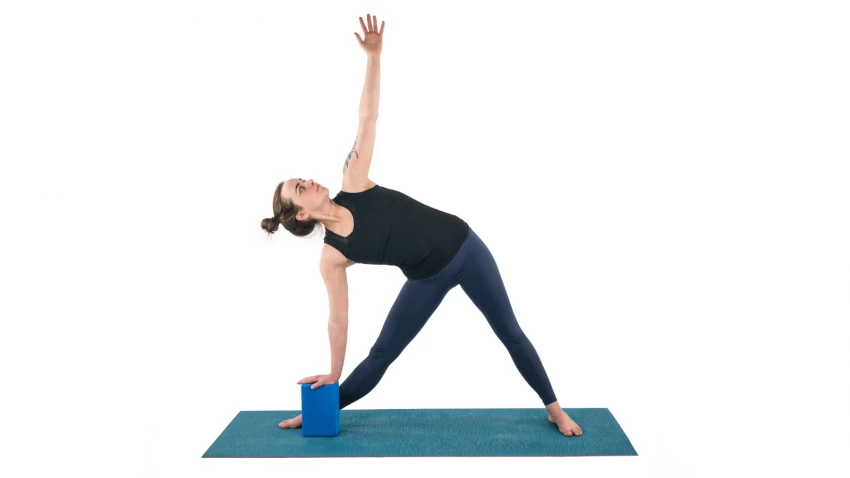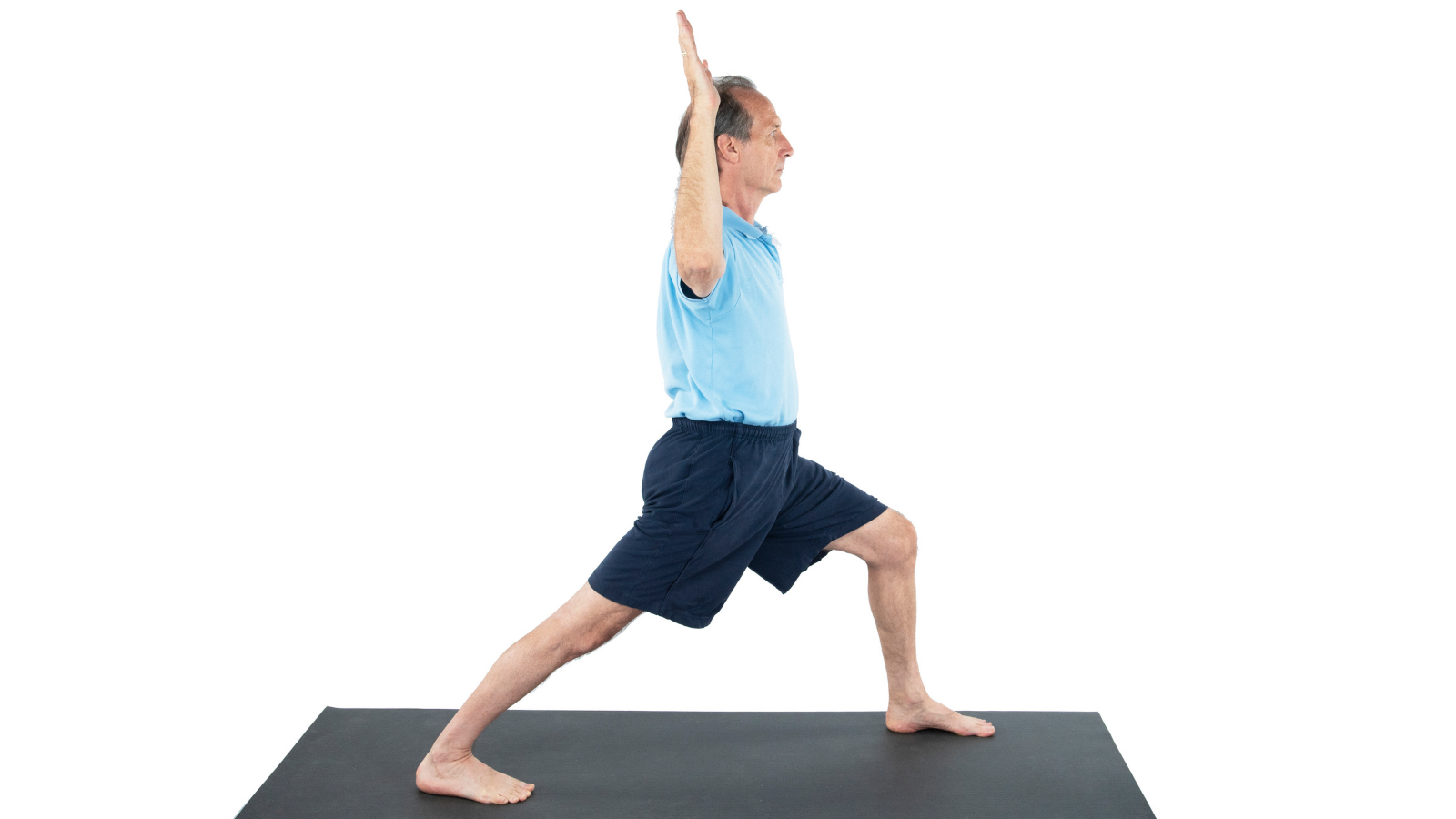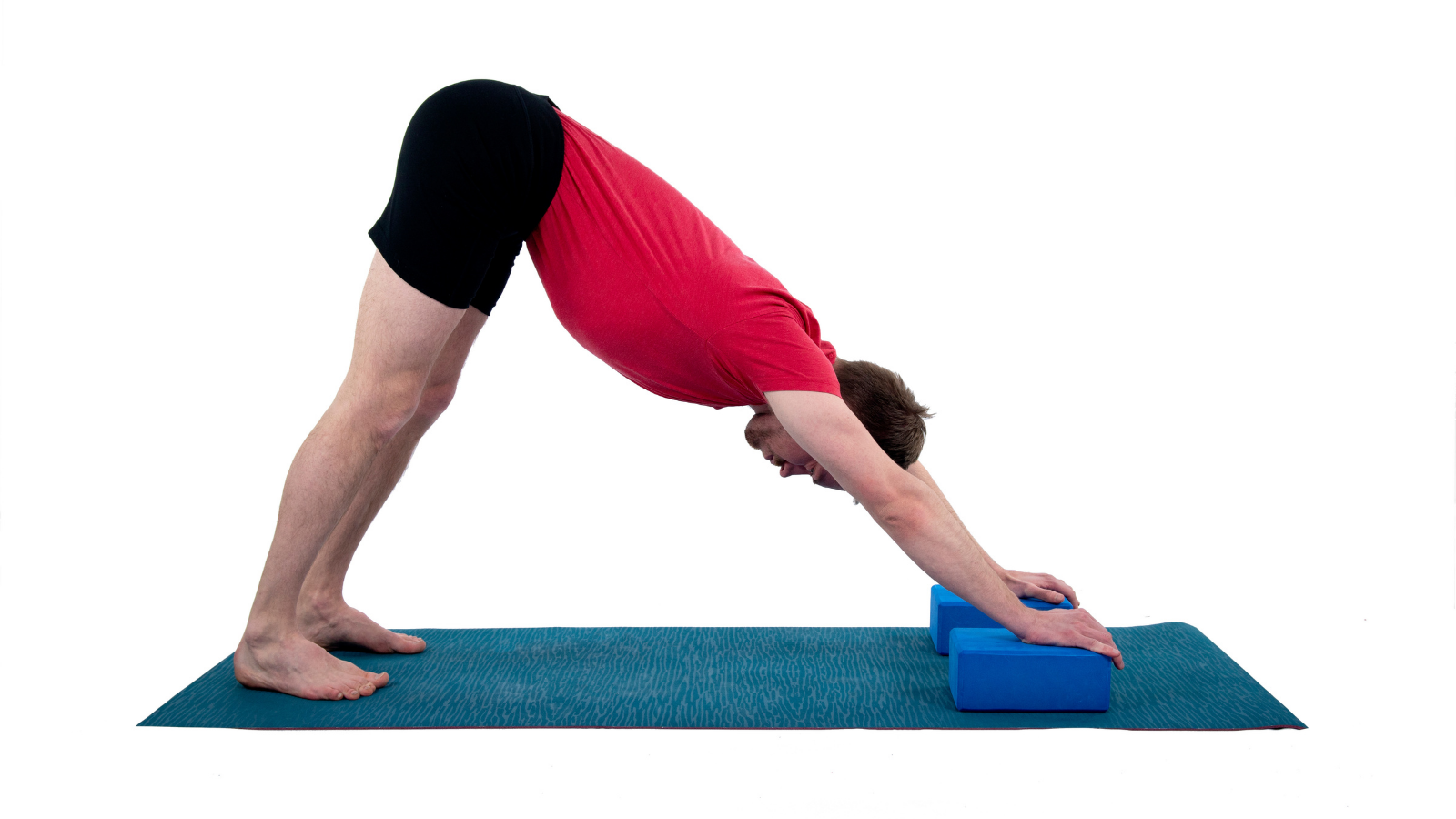Yoga is Not Just Stretching

We’ve all heard the cliché that yoga is “just stretching.” But anyone who has taken a few yoga classes knows better. All you have to do is try holding Downward-Facing Dog Pose (Adho Mukha Svanasana) for a couple of minutes. Or Side Plank Pose (Vasithasana). Or even Warrior 1 Pose (Virabhadrasana 1). Yoga is not just stretching.

One reason for this is that many of the yoga poses that you might think of as “stretching” also include weight-bearing and strength building as well. Think Triangle Pose (Trikonasana) and Extended Hand-to-Big-Toe Pose (Utthita Hasta Padangusthasana). Think about it: even a simple stretching pose like Arms Overhead Pose (Urdva Hastasana) is also strengthening your arms and upper body as raising arms above your head is resisting the pull of gravity.
Many of yoga’s poses combine stretching and strengthening. However, the yoga asana repertoire does include many poses that are more passive stretches, such as seated hip openers, seated forward bends, supported backbends, and reclined stretching poses. Even so, yoga is not just stretching.
That’s why I was excited to learn years ago that even yoga’s passive stretching poses— Reclined Leg Stretch Pose (Hasta Padanghustasana), for example—are strengthening as well. Of course, I just had to look into it further. I always want to know the why and the how as well as the what. Ultimately I found out that the way we typically think about stretching as a separate form of exercise from strengthening doesn’t really make sense.

Studies Show Yoga is Not Just Stretching
In Stretching Is Really A Form of Strengthening, physical therapist James Speck gives the following three reasons why stretching and strengthening can be considered the same activity:
- Similar active and passive tensile forces are present in both stretching and strengthening exercises.
- The body’s response to stretching and strengthening is similar in terms of the mechanical activation of pathways that promote muscle growth.
- Preliminary evidence suggests that regular stretching is able to promote muscle hypertrophy and muscular strength.
He is saying here that stretching alone has been found to produce changes in muscle size and strength similar to what is typically seen with strengthening exercises. Peck cites two studies to support this claim. In Effect of hamstring stretching on hamstring muscle performance, 15 days of static hamstring stretching was found to result in an increase in peak isokinetic torque generated by the muscles.
And in Chronic Static Stretching Improves Exercise Performance, a 10-week stretching program was found not only to have increased flexibility, but also led to significant improvements in strength, muscular endurance, and performance in jumping and sprinting drills. Those in the control group saw no improvements in these areas.
Stretching and Strengthening Are Complementary
 “I think it’s possible that we should not look at stretching so much as a way to make muscles longer, but instead view it as a way to make muscles stronger over a greater range of motion,” writes Speck. He proposes that stretching and strengthening muscles may actually be the same process because stretching and strengthening both:
“I think it’s possible that we should not look at stretching so much as a way to make muscles longer, but instead view it as a way to make muscles stronger over a greater range of motion,” writes Speck. He proposes that stretching and strengthening muscles may actually be the same process because stretching and strengthening both:
- result in muscle hypertrophy
- stimulate the expression of growth factors
- impart similar tensile forces on muscles
- lead to increased muscular strength
When we pull on a muscle during a stretch, the muscle actively, as well as passively, resists or pulls back. So the tensile forces generated from stretching may be very similar to the mechanical stress caused by strengthening exercises. Speck says that based on these findings, “it could be argued that passive stretching is very similar to a low-resistance strength training exercise.”
Physiological Reasons Why Yoga is Not Just Stretching
In addition, I’ve also learned that while you are stretching, you can consciously activate your agonist muscle, the opposite muscle to the one you’re stretching. This will cause the muscle you are stretching to release (through reciprocal inhibition). For example, if you are stretching your back thigh muscles (hamstrings), activating your front thigh muscles (quadriceps) will release your back thigh muscles, allowing you to increase the hamstring stretch. So not only will you be stretching more effectively but you’ll be strengthening the muscles you aren’t stretching! I always practice this way now whenever I do active poses that involve stretching because it just feels better to me—it’s easier to release the muscle being stretched and the whole pose feels more balanced.
I should say, however, that if you are already very flexible, doing passive stretches, although they may feel very good to you, may not be the best way for you to practice. Hypermobile people can actually injure themselves by overstretching. For the bendier among us, remembering that yoga is not just stretching is really important.
But for the rest of us, using yoga as we age to maintain or improve our flexibility—the range of motion in our joints—is actually not “just” stretching either. It’s cultivating essential physical skills that contribute both to maintaining the ability to balance and the ability to stay agile. It enables us to continue to do the activities we love, whether that means gardening, dancing, or playing with our favorite children. It’s nice to know that when we’re stretching we’re also doing some strengthening at the same time!
Also, read...
The Yoga Sutras: Practicing Non-Attachment without Becoming Detached
The Broomstick Effect: The #1 Key to Perfecting Balancing Yoga Postures
Related courses
Breath as Medicine: Yogic Breathing for Vital Aging
Yoga and Myofascial Release: Releasing Chronic Tension with the Bodymind Ballwork Method
Nina Zolotow, RYT 500, the author of the forthcoming book “Yoga for Times of Change” and the Editor-in-Chief of the Yoga for Healthy Aging blog, is both a yoga writer and a yoga teacher. She trained to be a yoga teacher at The Yoga Room in Berkeley, California, has studied yoga therapy with Shari Ser and Bonnie Maeda, and is especially influenced by the teachings of Donald Moyer. She also studied extensively with Rodney Yee and is inspired by the teachings of Patricia Walden on yoga for emotional healing. Her special area of expertise is yoga for emotional well-being (including yoga for stress, insomnia, depression, and anxiety). She teaches workshops and series classes on yoga for emotional well-being, stress management, better sleep, home practice, and cultivating equanimity.
Nina is the co-author with Baxter Bell of Yoga for Healthy Aging: A Guide to Lifelong Well-Being and co-author with Rodney Yee of Yoga: The Poetry of the Body (with its companion 50 Card Practice Deck) and Moving Toward Balance. She is also the author of numerous articles on yoga and alternative medicine.



